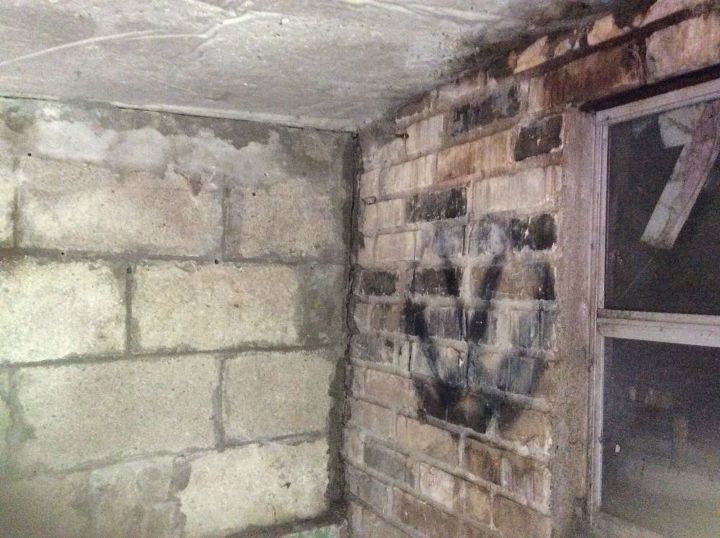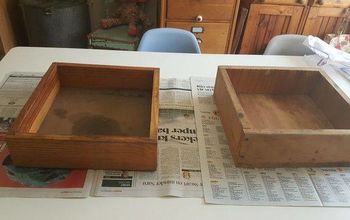Looks ugly but hoping some fixing up is possible.
How can I repair a leak on a cement roof?

I have an old brick/mortar shed with a cement roof, built before my time, maybe 40 years ago. It was added onto, with the roof of the add-on a little below the roof of the original side, and apparently not tightly joined. I want to make the add-on into a garden shed for me, the original part is pretty dry and used for storage, but this side get very damp, I think there is a leak but have not seen actual water, just extreme damp. Also the wall where it meets with the original has an obvious crack from ceiling to the floor, and it looks like it’s the same along the ceiling. I really want to make this shed useful. How can I fix it to make it dry so I can work in there and store garden supplies? Should I run beads of silicone along the joints or is there a better way? I can’t afford to hire a contractor, and tearing it down altogether to replace it would be extremely costly. Any good ideas that can be done by an amateur do it yourselfer?
Thanks for taking an interest.
The shorter side is the one I want to fix. I suspect a leak under the roof overlap from the original to my hopeful potting shed.
Related Discussions
How to get rid of mice?
We seem to have some unwelcome Mickeys and Minnies in our house. What is the best way to get rid of them?
How to remove popcorn ceiling with asbestos?
I want to remove my popcorn ceiling, but it has asbestos in it. How do I go about this safely?
How to caulk baseboard gaps?
How do I fill gaps at baseboard, should I caulk? If so, does anyone know how to caulk baseboards?
How to fix squeaky hardwood floors?
How do I fix squeaky hardwood floors?
How can I repair water stains caused by a leaking roof?
how can I remove old water stains from my leaky roof from my pine ceiling and pine wood and thankyou






use a liquid rubber. Make sure you clean the entire roof and check the entire roof, not just the area of where the leak is. fill in the cracks with concrete filler. Then get a rubber sealant. put that on. 2 coats. Liquid Rubber is about $25 a gallon.
When yoy clean and scrub make sure you use bleach for mold then fill the cracks with cement and then prime with an oil base primer. I would use 2 coats of primer as well. That helps keep the mold out. Its a lot of physical work but well worth it in the end.
Good Luck.
I would enlarge the cracks and insert "hydraulic cement" for the entire crack. Once dry, I would coat the walls with a water proofer like Thompson's water seal on all walls. Any roof drains should be directed away from the foundation and ensure ground slopes away from foundations. You may need to add drainage trenches at foundation. Check the roof for potential leakage and maybe re-roof.
Another option might be to install gutters and downspouts to shunt water away from the walls. If this is an underground room, try grading the outside area so that water runs away from the wall.
I like Debbie's suggestion with the rubber sealant but use Dry lock on the walls.
A combination of Debbie's and Ken's suggsetion is perfect. Liwuid rubber on the roof and hydraulic cement in the inside cracks and Drylock paint on the walls.
I agree, that does sound like the perfect solution, however locating the products is a huge challenge in itself. I can find some that are similar in description, but will they be as effective and worth the work of applying? Or the expense if they don’t perform? Too many things to consider and the season is running short, but needs to get done quickly, by next spring it will only be worse. I have a hunch what I am looking at is mold, and I really don’t relish the idea of dealing with THAT. Thank you for your input, I appreciate it. It kind of simplified Debbie’s and Ken’s combined solutions, in a way.
You can fix it yourself with the help of butyl MS Caulk that is an ideal caulking agent. Butyl MS Caulk is the best product for sealing purposes ideally used for such kind of issues. It works very effectively on expansion joints, roofing, sidings, commercial glass, windows, and perimeter edge sealing. It can be applied at low temperatures, has a quicker dry time and a state-of-the-art hybrid polymer chemistry designed to withstand severe climates, weathering, and most environmental conditions. It is a very long-lasting and cost effective product.
I would go to an RV store and get a roof repair from them. It definitely needs to be cleaned and free from mold before starting.
Hi Marion: The first thing I would do is to make sure the area is completely dry. You might be able to put a fan in there, blowing out, as opposed to onto the wall. Then, once that's done, maybe paint the walls with a water proof paint: Search Results for waterproofing paint at The Home Depot or a waterproof sealer: Search Results for water proof sealant at The Home Depot. The moisture may be coming from behind the wall, so check to see what, if anything, is holding water in that area and then address that. If you see any holes, cracks or openings, I'd seal them up with caulk.
Hi Marion, hope this helps you. Flex seal is a great idea for this predicament.
https://www.homedepot.ca/product/flex-seal-liquid-white-liquid-rubber-sealant-coating-16-oz/1001641633?eid=PS_GO_140203__ALL_PLA-526641&eid=PS_GOOGLE_D00_Corporate_GGL_Shopping_All-Products_All%20Products__PRODUCT_GROUP_aud-765569715721:pla-2280044218020&pid=1001641633&gad_source=1&gclid=Cj0KCQjw5cOwBhCiARIsAJ5njubRU6uXV1pIPO8d0DR9ekzV0OAJcqQAj8658ABZfBh23v5XRIDOGaMaAmEZEALw_wcB&gclsrc=aw.ds